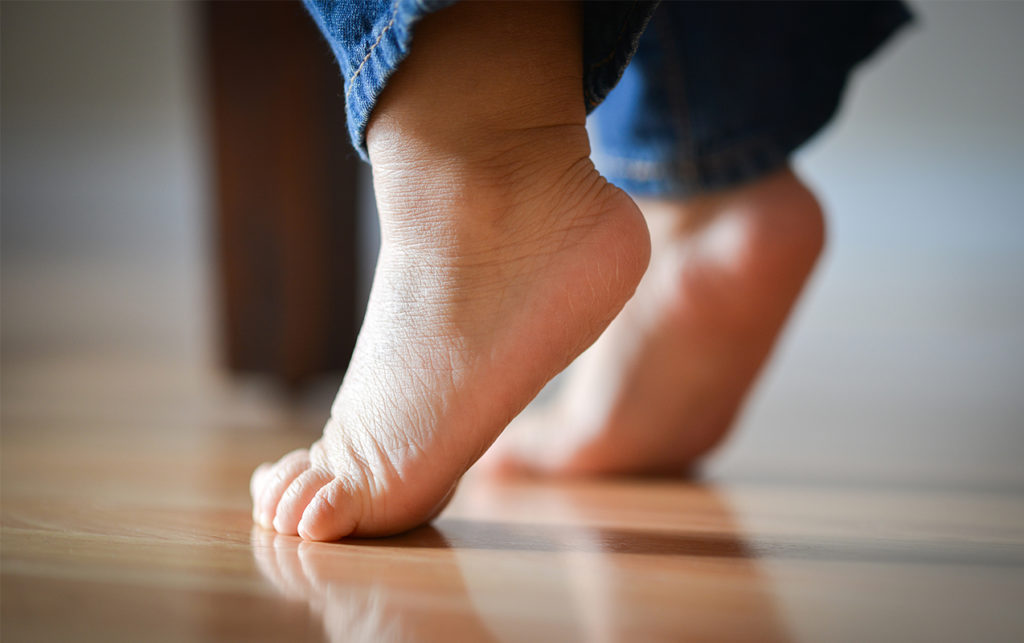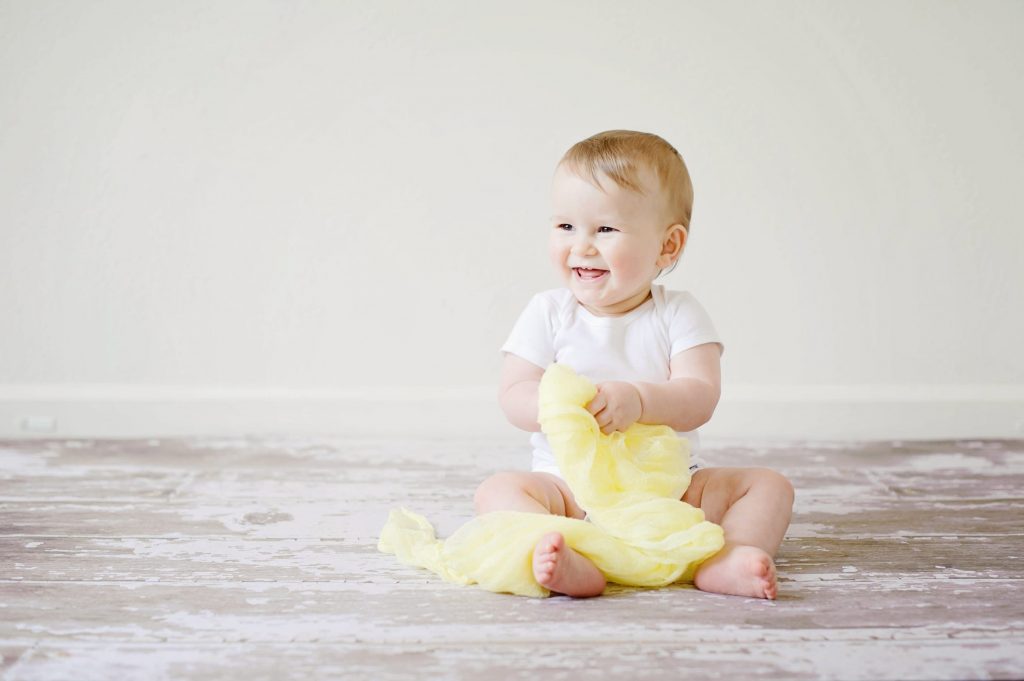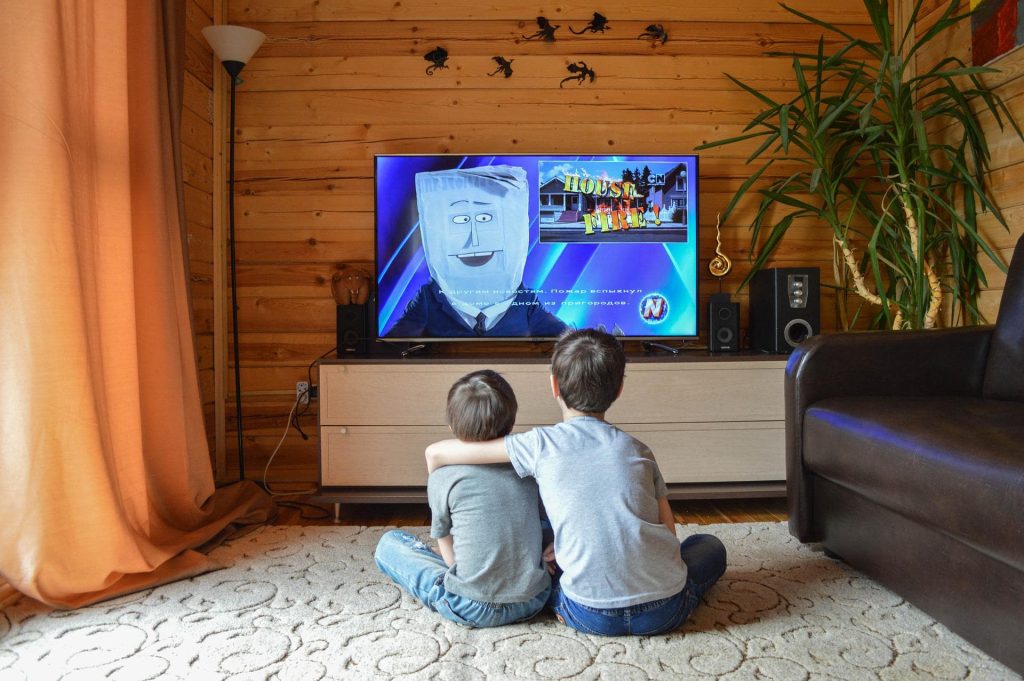Autism in babies is characterized by very subtle symptoms and features that can be detected by specialized professionals.
Although not in all cases, autism can be detected in some babies during the first few months of life.
There are tests available that help us to detect these autism symptoms in babies, and an early diagnosis allows us to start therapy as soon as possible.
Índice
Therapies targeted at babies with autism are highly effective and can achieve progress that may not be possible when the child is older.
However, not all individuals with autism show evident symptoms as babies, as some may begin to exhibit them later on.
In this article, we will provide all the information you need to know about a baby with autism.
👶 The Baby with Autism
We refer to a baby with autism as a child up to 2 years old who displays symptoms of autism and has been diagnosed by a specialist.
Diagnosing autism in a baby is complex because they often exhibit very subtle warning signs that are often overlooked.
However, detecting these symptoms of autism in babies can allow for an early diagnosis and, therefore, an early intervention.
In fact, one of the factors with the best prognosis for individuals with autism is the age at which therapeutic stimulation began. The earlier it starts, the greater the benefits.
But not all babies with autism show warning signs during the first two years of life, as many do not display these signs until after this age.
❗ Signs and Early Symptoms of Autism in Babies
The symptoms of autism in babies are usually very subtle, and detecting them requires the presence of a specialist who can identify them.
These symptoms can range from unusual eye contact or a lack of social play with adults to not responding when called by their name.
Obviously, the characteristics of autism in babies will vary depending on their age.
For this reason, we will now divide the main characteristics or symptoms displayed by babies with autism by age.
Some children can develop certain skills later than normal without this indicating that they have autism
Of course, in each subsequent stage, there may also be the presence of symptoms from previous months, and signs that tend to appear in certain months may appear earlier in some cases.
For this reason, we recommend reading the complete list of the most typical symptoms in each month:
- Symptoms of Autism in 2-Month-Old Babies
- Symptoms of Autism in 4-Month-Old Babies
- Symptoms of Autism in 6-Month-Old Babies
- Symptoms of Autism in 9-Month-Old Babies
- Symptoms of Autism in 1-Year-Old Babies
- Symptoms of Autism in 2-Year-Old Babies
Autism in 2-month-old babies
During the first two months of life, the signs of autism are very mild, and therefore, in most cases, they are not given much importance.
In fact, diagnosing autism in 2-month-old babies is highly unlikely, but we can still highlight some symptoms that children who were later diagnosed with autism already showed at 2 months of age.
Autism symptoms in babies 2 months
- Limited eye contact
- Lack of interest in looking at the faces of parents or other adults
- Poor facial expression
- Minimal spontaneous smiling
- Does not return a smile when smiled at by an adult
- Tends to be very calm
- Does not demand much attention from parents
Autism in 4-month-old babies
At 4 months, babies begin to have more self-control over their bodies, and slightly more complex interaction skills start to emerge.
During this stage, we may detect some more evident symptoms of autism, but it is still highly unlikely to diagnose autism at just 4 months of age.
However, certain behaviors can be detected that, as experts in baby development, we can associate as characteristics of autism in 4-month-old babies.
Autism symptoms in 4 months old babies
- Does not turn the head towards familiar sounds or voices
- Does not attentively or consistently observe people’s faces
- Does not babble
- Does not turn the head towards new sounds
- Does not imitate any sounds made by adults
- Does not imitate facial gestures
- Does not smile at people
- Does not engage or participate in typical baby games with adults
- Shows minimal facial or body expressiveness
Autism in 6-month-old babies
At 6 months, babies are much more aware of their surroundings and express their emotions through distinct reactions.
Detecting autism in a 6-month-old baby remains rare, but in some cases, the symptoms may start to become evident.
The fact that the baby does not turn when called by their name or the parents’ sense that their child does not “connect” with them are signs that something in their development may not be normal.
Symptoms of Autism in 6-Month-Old Babies
- Does not turn towards their name being called
- Does not turn towards fun, loud, or curious sounds
- Does not understand the word “no” as a prohibition
- Does not respond with a sound when an adult directs a sound towards them
- Babbles but does not use consonants in babbling
- Does not use sounds to express joy or anger
- Does not seem to recognize the voices of mom and dad
- React similarly when seeing mom or dad compared to a stranger
Autism in 9-month-old babies
At 9 months, a baby’s interaction and communication skills should become more elaborate.
During this stage, the baby is highly interested in communicating with others through babbling, eye contact, and their own behavior.
While diagnoses of autism at 9 months are still very rare, the warning signs of autism become more evident.
Symptoms of Autism in 9-Month-Old Babies
- Does not point with the finger to request something
- Does not show affection towards parents or caregivers
- Does not seem to enjoy the presence of adults
- Does not comprehend simple words
- Babbles but does not use consonants in babbling
- Does not attempt to imitate adult vocalizations
- Limited eye contact when trying to communicate with an adult
- Does not seek the attention of adults
- Fixates on lights or moving objects for extended periods
- Displays repetitive behaviors, often performing them continuously
- Does not use toys in a functional manner
Autism in 1-year-old babies
Signs of autism in 1-year-old babies begin to become more evident in some cases.
At 1 year of age, signs of autism start to become more evident in some cases.
As children reach their first year, they become more independent, move around more autonomously, and develop curiosity about their surroundings.
As they interact more with their physical environment and the people around them, the symptoms of autism also become more noticeable.
Symptoms of Autism in 1-Year-Old Babies
- Does not pay much attention to adult conversations or speech
- Does not use simple nonverbal communicative gestures, such as shaking the head to say “no”
- Does not use more complex nonverbal communicative gestures, such as waving goodbye
- Does not say any simple words like “daddy” or “mommy,” or approximate versions of them
- Does not attempt to imitate words
- Does not search for an object when hidden by an adult, as if it no longer exists
- Does not comprehend basic words (pacifier, up, come, car, etc.)
- Does not imitate others’ actions
- Does not point to objects he or she wants them
- Uses objects inappropriately or non-functionally
Autism in 2-year-old babies
Autism in 2-year-old babies becomes apparent to educators and pediatricians in most cases.
While it may not be completely evident, signs of autism start to become detectable in many cases, leading to diagnoses of autism in approximately 2-year-old babies.
Detecting autism at the age of 2 allows to start an early intervention of autism symptoms when the child is 2 years in most of cases.
Symptoms of Autism in 2-Year-Old Babies
- Uses only a few single words
- Does not produce simple two-word phrases
- Does not understand the names of objects, people, or body parts
- Experiences difficulties with gross motor skills (is “clumsy”)
- Shows little interest and does not enjoy the presence of other children
- Appears to not understand simple instructions
- Does not repeat words heard from adults
- Does not engage in symbolic play (playing with cars, dolls, action figures, etc.)
- Engages in repetitive play
- Uses toys inappropriately
- Repeats phrases from favorite cartoons consistently
📝 Autism Tests for Babies
There are some autism tests for babies that allow us to detect signs of autism and provide a secure diagnosis.
The challenge we face is that not all autism tests are suitable for babies, and we only have access to a few of them.
In fact, the valid test for assessing autism symptoms in very young babies is the Communication and Symbolic Behavior Scales – Developmental Profile (CSBS-DP), which can be used from 6 months of age.
From 12 months, we can use also the ADOS-2, from 16 months the M-CHAT-R, and from 2 years of age, we can also incorporate the ADI-R.
| Age | Application | |
| CSBS-DP | 6 months to 2 years | Online answered by parents |
| ADOS-2 | 12 months to adults | Administered by a professional |
| M-CHAT-R | 16 to 30 months | Online answered by parents |
| ADI-R | 24 months to adults | Administered by a professional |
Next, we will explain these four tests and categorize them as “Autism Tests Administrated by Professionals” and “Online Autism Tests”, based on whether they require trained specialists or can be completed online by parents themselves.
The autism tests for babies are as follows:
Online Autism Tests
We are fortunate to have two online autism tests for babies that can be completed in just 5 or 10 minutes, providing instant results.
If you suspect that your child may have autism, the easiest approach is to take the online M-CHAT-R or CSBS-DP test for an initial evaluation.
Obviously, these tests are not sufficient to justify an autism diagnosis, but they can provide valuable information.
Next, let’s explain in more detail the characteristics of the M-CHAT-R and CSBS-DP tests.
M-CHAT-R
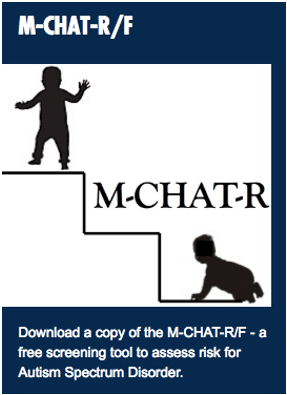
The M-CHAT-R test is a questionnaire applicable to babies between 16 and 30 months of age with suspected autism.
This test should be completed by the parents and can be done online.
It is important to note that the results of this test are not enough to provide a definite diagnosis of autism, but they do give us information about whether we should seek advice from a specialist or not.
CSBS-DP
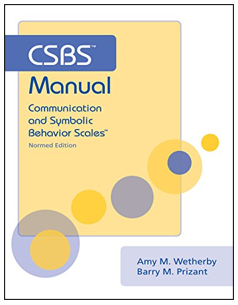
The CSBS-DP test (Communication and Symbolic Behavior Scales – Developmental Profile) is a test aimed at babies between 6 and 24 months of age.
This test consists of 24 questions that should be answered by the parents of the child with suspected autism.
Once the test is completed, we will obtain results in the areas of social communication, expressive language, and symbolic skills, which are affected in autism.
Therefore, this test allows us to assess autism symptoms in very young babies, starting from 6 months of age.
Autism Tests Administrated by Professionals
For a proper evaluation of autism symptoms in a baby, it is necessary to administer autism tests by a qualified professional.
There are a series of tests that have proven to be effective in diagnosing autism in babies when administered by qualified professionals.
Despite the effectiveness of these tests, it is important to note that diagnosing autism in babies is very challenging and can often go unnoticed.
For this reason, if we detect developmental abnormalities in the baby and even if we obtain negative results for autism with these tests, we should begin specialized stimulation, even without a formal diagnosis.
ADOS-2
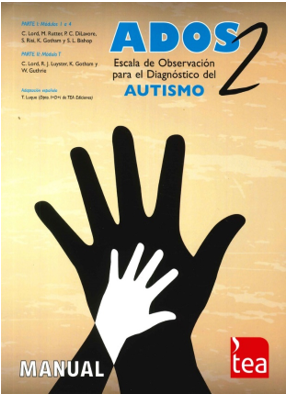
The ADOS-2 test is the most effective test for evaluating autism symptoms.
It is a test that can be administered from 12 months of age to adulthood and must be conducted by a highly qualified professional.
In fact, specific training in administering the ADOS-2 test is required due to its complexity.
The test provides us with a wealth of information about the possible presence of autism symptoms and allows for a highly accurate evaluation.
We could say that the ADOS-2 test is the most effective autism test, the most commonly used and the most precise.
ADI-R

The ADI-R test is an interview conducted with the parents to assess their child’s autism symptoms.
This test can be administered to parents whose children are 2 years old up to adulthood.
The ADI-R autism detection test must be administered by a trained professional and provides valuable information for the diagnosis of Autism Spectrum Disorder (ASD).
The limitation of ADI-R is that it cannot be administered before 2 years of age, so it is not possible to use it for babies under 24 months.
However, for children older than 2 years, the application of this test is highly recommended, together with the ADOS-2, because they are the most effective test for autism evaluation.
👍 Therapy for Babies with Autism
Therapy for babies with autism is highly effective when conducted by qualified therapists and following methods that have demonstrated effectiveness through scientific evidence.
Early intervention is key in autism because it has been shown that the earlier therapy begins, the greater the progress for the individual.
Therefore, once autism is detected in a baby, specialized therapy or stimulation should be initiated, but it must meet certain criteria.
Next, we will discuss the importance of therapy for babies with autism and which of all the available therapies is considered the best.
Importance of Therapy for Babies with Autism
Therapy for babies with autism is of immense importance because it can yield the most therapeutic benefits.
In autism, as well as in all neurodevelopmental disorders, one of the most promising factors is the age at which therapy begins.
This means that the earlier therapeutic intervention starts, the greater the advances in the baby’s development can be.
The effectiveness of early intervention in babies and children with autism can be explained by two factors: neuroplasticity in babies and the “pathological cycle” of autism.
Neuroplasticity in babies
Neuroplasticity is the brain’s ability to generate new neural connections as a result of the stimuli it receives from the environment.
In simpler terms, neuroplasticity is the brain’s capacity for learning.
This concept is crucial because neuroplasticity is much higher in babies than in older children, which means that the brain has the greatest capacity to “learn” during infancy.
The first few months of life are the period when the brain undergoes the most significant changes in volume and neural connections.
This means that the infant’s brain experiences substantial changes in a very short period of time.
During this period, the brain develops and could be described as “taking shape.”
Therefore, the changes we can achieve in terms of neurodevelopment during this time period are much greater than in later stages.
Pathological Cycle of Autism
The major problem in autism is the “pathological cycle” that is created by the difficulties experienced by a baby with autism.
This “pathological cycle” explains how autism develops and can worsen during the early years of life, but it also offers the opportunity to “break” it through early stimulation.
Detailed information about the development of autism and its “pathological cycle” can be found in the free online course “Introduction to Autism” offered by the Autism Space Academy.
In summary, the “pathological cycle” of autism’s development can be explained as follows:
Babies with autism have difficulties that hinder their ability to relate appropriately to people around them.
These difficulties also affect their way of interacting with objects in their environment, which is characterized by being restricted, repetitive, and therefore not enriching for their development.
Thus, the difficulties faced by babies with autism result in significantly fewer interaction opportunities with adults and objects in their environment.
And what happens when a baby interacts minimally and inappropriately with people and objects in their environment? This baby will not learn (or at least not learn appropriately) to interact with others.
Therefore, the initial difficulties of a baby with autism exacerbate their inability to learn how to interact with people and objects in their environment, leading to the so-called “pathological cycle” of autism’s development.
The goal of therapy for babies with autism is to break, to some extent, this “pathological cycle” and minimize the severity of these difficulties.
What is the Best Therapy for Babies with Autism?
The best therapy for babies with autism is any that fulfills the following characteristics:
- Therapy is conducted at home
- The therapist involves and educates the parents
- Periodic evaluations of the baby’s development are conducted
- Short-term therapeutic goals are established
- The therapist considers all areas of the baby’s development
- Stimulation is provided through play and the baby’s enjoyment.
All of these characteristics that define quality therapy for a baby with autism have been described and proven by several scientific studies.
There are various intervention programs that meet these criteria and are therefore effective, but the one that has shown the greatest benefits for babies with autism is the “Denver Model (ESDM).”
“Denver Model (ESDM)”: The Most Effective Therapy for Babies with Autism
The “Denver Model (ESDM)” is a therapy program for babies and children with autism that has demonstrated the highest effectiveness in improving the symptoms associated with autism.
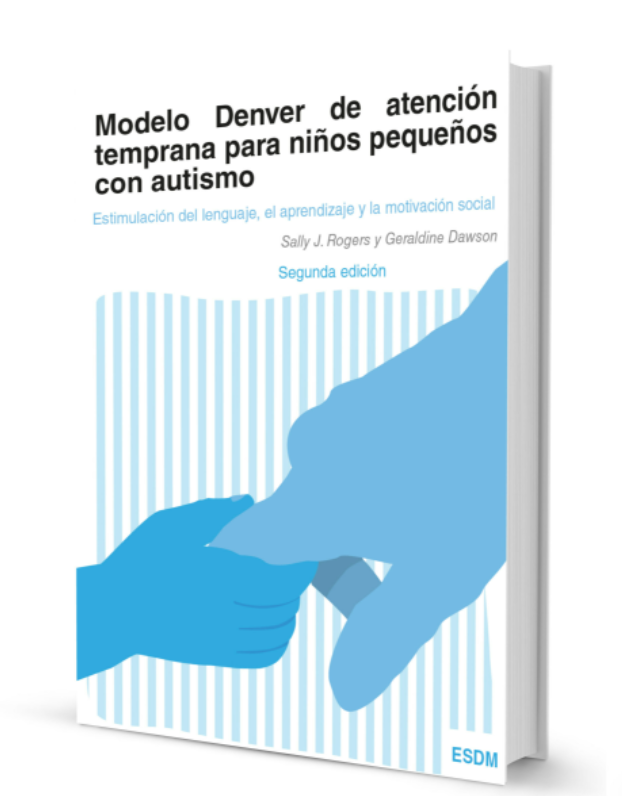
This program is specially designed for babies and children with autism between the ages of 1 to 4, although it can be applied to younger or older individuals if deemed appropriate.
The Denver Model meets all the criteria for best practices in early intervention for children with autism, and there are increasing numbers of trained therapists who apply it.
🔎 How to Detect Autism in Babies?
Detecting autism in a baby can be challenging because the symptoms are still very subtle.
To detect autism in babies, it is necessary for someone with knowledge of typical infant development to notice that something is not progressing in a neurotypical manner.
Typically, it is educators in daycare settings or pediatricians who first notice the early warning signs.
During the first few months of life, it can be difficult for parents to detect the symptoms of autism in babies, as they are often very subtle.
To detect autism in babies, it is important to carry out the necessary pediatric check-ups and have a healthcare system qualified to identify the early warning signs of autism in infants.
🔵 Conclusion
Throughout the article, we have explored the symptoms of autism at different stages of infancy and the available tests for its detection.
It is important to note that the signs of autism in babies can vary widely, and not all babies will exhibit the same symptoms.
However, being attentive to early indicators can aid in early diagnosis and early intervention, which can make a significant difference in the child’s development.
Online autism tests for babies can help identify warning signs of autism, but it is crucial to remember that these tests do not replace evaluation and diagnosis by a specialized healthcare professional.
Early therapy is essential for babies with autism, but it should be based on evidence-based therapeutic approaches, such as cognitive-behavioral strategies and the involvement of the family in therapy.
In conclusion, detecting and addressing autism in babies early on is crucial for their development and well-being.
By being attentive to signs of autism at different stages of infancy, conducting screening tests, and seeking appropriate therapy, we can provide the necessary support for babies with autism to reach their full potential and have a fulfilling quality of life.


